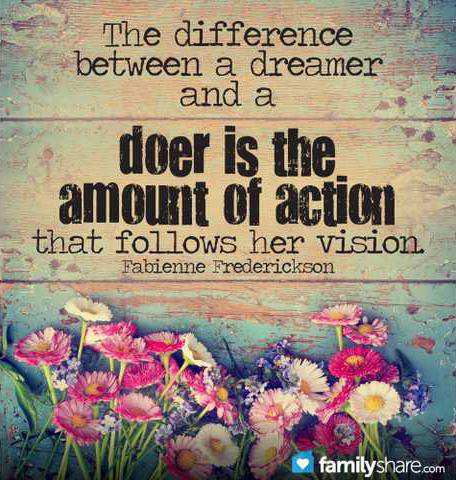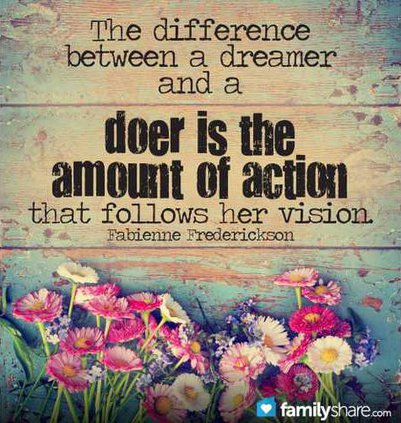![]() We all have a dreamer in us. Oftentimes, it is easier to envision things as oppose to putting our best foot forward to bring that vision to light. Many of our dreams require money or we believe we do not have what it takes. So, we continue to dream. But is it fair?
We all have a dreamer in us. Oftentimes, it is easier to envision things as oppose to putting our best foot forward to bring that vision to light. Many of our dreams require money or we believe we do not have what it takes. So, we continue to dream. But is it fair?
Dreaming about a career change sounded wonderful in my head, but seemed scary and impossible to do. I decided to put that dream on the backburner. After several months of consideration and anxiously wanting a change, I made up my mind. I decided to fulfill my dream at all cost.
Talking about your dreams but putting them aside is a vicious cycle. It is challenging to break free from it. But if you truly believe enough in your dreams, you need to start acting more and talking less. Here are five steps to becoming a doer:
1. Think
Take your time to think thoroughly of the dreams you feel strongly about. Think of the pros and cons. If you can visualize your dreams, then you are getting a step closer to making it happen.
2. Write or record
Create a list of the dreams you have visualized. Once completed, put it aside. A few days later, read the list again. By then your dreams may have shifted or the passion grew stronger. You can take it a step further and record your dreams. When you record your dreams and play it back at a later time, you will hear in the tone of your voice whether you still have that enthusiasm.
3. Decide
This is your chance to put your dreams in order. Decide which dreams are possible for you to pursue. If you're married with children, you must consider them in your decision. Your dreams may hurt the financial stability of the family or affect the time you spend with your spouse and children. For example, you want a change of career but in a different state. Will it be easy for your spouse to get a job? Will your children adapt to a new school? The process of decision-making is crucial before moving on to the next step.
4. Plan
Once you have your dreams in order, it is time to set plans. For each plan, you should give yourself a specific deadline. During that timeframe, you will gather the necessary details needed to advance. Do you need money for this dream? If so, how much do you need to save and how much time do you have.
5. Execute
After you build up the best plans, it is time to prioritize your dreams by importance and make them happen. Not all dreams you execute have the results you hope for. But at the end of the day, you became a doer and left that dreamer behind.
It does not matter how long it takes to bring your dreams to fruition. What matters is the dedication and effort you put into carrying out each dream.
Mayra Bitsko is a freelance writer, the author of A Second Chance and The Past Beckons and holds a master's degree in business administration-accounting. Contact her at www.mrsmbitsko.com








